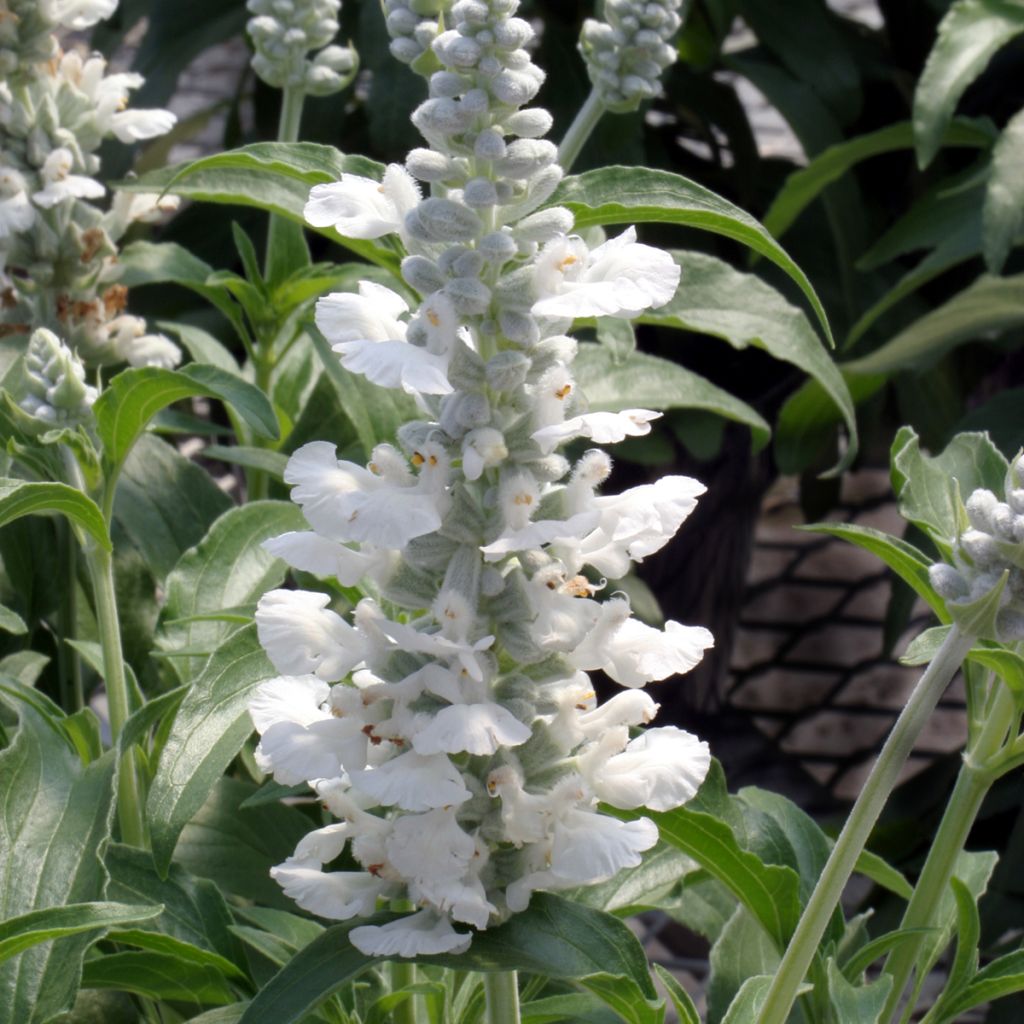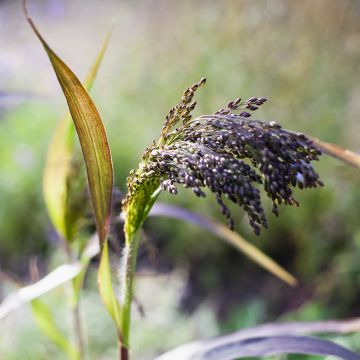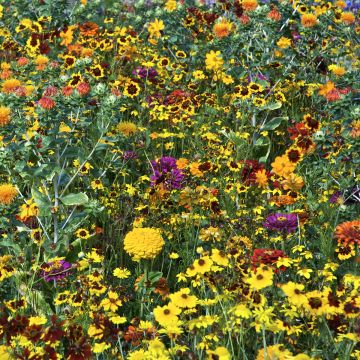

Salvia farinacea Cirrus White - seeds


Salvia farinacea Cirrus White - seeds
Salvia farinacea Cirrus White - seeds
Salvia farinacea Cirrus White
Special offer!
Receive a €20 voucher for any order over €90 (excluding delivery costs, credit notes, and plastic-free options)!
1- Add your favorite plants to your cart.
2- Once you have reached €90, confirm your order (you can even choose the delivery date!).
3- As soon as your order is shipped, you will receive an email containing your voucher code, valid for 3 months (90 days).
Your voucher is unique and can only be used once, for any order with a minimum value of €20, excluding delivery costs.
Can be combined with other current offers, non-divisible and non-refundable.
Home or relay delivery (depending on size and destination)
Schedule delivery date,
and select date in basket
This plant carries a 6 months recovery warranty
More information
We guarantee the quality of our plants for a full growing cycle, and will replace at our expense any plant that fails to recover under normal climatic and planting conditions.
Would this plant suit my garden?
Set up your Plantfit profile →
Description
Salvia farinacea 'Cirrus White' is a selection of compact, elegant, and generously flowering white-flowered meal sage. This plant, theoretically perennial, is grown as an annual in most regions. This variety offers superb spikes of fluffy white flowers that rise above silver foliage, creating a particularly refined colour combination. It blooms for many weeks between summer and early autumn. Decorative in flower beds, borders, and flower pots, it is also a very beautiful cut flower.
Salvia farinacea 'Cirrus White' is a plant of the lamiaceae family, like all sages. The species with blue-violet flowers is a perennial plant native to Texas and Mexico. Its low hardiness and rapid growth make it an excellent annual in most climates. The 'Cirrus White' cultivar has a more compact and bushy habit, forming tufts of 35-40 cm in all directions. It forms clusters of stems covered with green-grey foliage, composed of slightly toothed lanceolate leaves, covered on the underside with a white down. From July to October, upright and flexible spikes appear, covered with small white hairs adorned with pure white flowers. Meal sages get their name from their stems covered with a light bloom.
The 'Cirrus White' meal sage will be perfect paired with the 'Strata' variety, which is of equivalent size and blooms simultaneously. In flower beds, it can be associated with ground cover roses, Lobelia speciosa 'Kompliment Tiefrot', and Godetias 'Rembrant', for example. It can also be paired with grasses, 'Blanche' gauras, and backed by the silver foliage of 'Powis Castle' wormwood in a white garden. This plant also forms lovely borders, and when planted along pathways, it can be mixed with 'Yo Yo' snow-in-summer, which will carpet its base in a soft harmony of muted tones. Its floral spikes hold up well in a vase.
Report an error about the product description
Flowering
Foliage
Plant habit
Botanical data
Salvia
farinacea
Cirrus White
Lamiaceae
Cultivar or hybrid
Other Flower seeds by variety
View all →Planting and care
Sow in February/March on the surface of good seed compost. Make sure the compost is moist, but not waterlogged and seal in a polyethylene bag until germination, which usually takes 2-3 weeks at 18-25 °C. Expose the seedlings to light, which is beneficial for germination.
Transplant when the plants are large enough to handle into 8 cm pots and let them grow on in cooler conditions. Gradually acclimatise them to outdoor conditions for 10-15 days before planting in the garden, once all risk of frost has passed, spacing them 30 cm apart, in sunny, well-worked, ordinary soil.
You can also directly sow in place, after the last frost.
Salvias thrive in fertile, moist, well-drained, well-worked soils, in full sun or partial shade.
Sowing period
Intended location
This item has not been reviewed yet - be the first to leave a review about it.
Similar products
Haven't found what you were looking for?
Hardiness is the lowest winter temperature a plant can endure without suffering serious damage or even dying. However, hardiness is affected by location (a sheltered area, such as a patio), protection (winter cover) and soil type (hardiness is improved by well-drained soil).

Photo Sharing Terms & Conditions
In order to encourage gardeners to interact and share their experiences, Promesse de fleurs offers various media enabling content to be uploaded onto its Site - in particular via the ‘Photo sharing’ module.
The User agrees to refrain from:
- Posting any content that is illegal, prejudicial, insulting, racist, inciteful to hatred, revisionist, contrary to public decency, that infringes on privacy or on the privacy rights of third parties, in particular the publicity rights of persons and goods, intellectual property rights, or the right to privacy.
- Submitting content on behalf of a third party;
- Impersonate the identity of a third party and/or publish any personal information about a third party;
In general, the User undertakes to refrain from any unethical behaviour.
All Content (in particular text, comments, files, images, photos, videos, creative works, etc.), which may be subject to property or intellectual property rights, image or other private rights, shall remain the property of the User, subject to the limited rights granted by the terms of the licence granted by Promesse de fleurs as stated below. Users are at liberty to publish or not to publish such Content on the Site, notably via the ‘Photo Sharing’ facility, and accept that this Content shall be made public and freely accessible, notably on the Internet.
Users further acknowledge, undertake to have ,and guarantee that they hold all necessary rights and permissions to publish such material on the Site, in particular with regard to the legislation in force pertaining to any privacy, property, intellectual property, image, or contractual rights, or rights of any other nature. By publishing such Content on the Site, Users acknowledge accepting full liability as publishers of the Content within the meaning of the law, and grant Promesse de fleurs, free of charge, an inclusive, worldwide licence for the said Content for the entire duration of its publication, including all reproduction, representation, up/downloading, displaying, performing, transmission, and storage rights.
Users also grant permission for their name to be linked to the Content and accept that this link may not always be made available.
By engaging in posting material, Users consent to their Content becoming automatically accessible on the Internet, in particular on other sites and/or blogs and/or web pages of the Promesse de fleurs site, including in particular social pages and the Promesse de fleurs catalogue.
Users may secure the removal of entrusted content free of charge by issuing a simple request via our contact form.
The flowering period indicated on our website applies to countries and regions located in USDA zone 8 (France, the United Kingdom, Ireland, the Netherlands, etc.)
It will vary according to where you live:
- In zones 9 to 10 (Italy, Spain, Greece, etc.), flowering will occur about 2 to 4 weeks earlier.
- In zones 6 to 7 (Germany, Poland, Slovenia, and lower mountainous regions), flowering will be delayed by 2 to 3 weeks.
- In zone 5 (Central Europe, Scandinavia), blooming will be delayed by 3 to 5 weeks.
In temperate climates, pruning of spring-flowering shrubs (forsythia, spireas, etc.) should be done just after flowering.
Pruning of summer-flowering shrubs (Indian Lilac, Perovskia, etc.) can be done in winter or spring.
In cold regions as well as with frost-sensitive plants, avoid pruning too early when severe frosts may still occur.
The planting period indicated on our website applies to countries and regions located in USDA zone 8 (France, United Kingdom, Ireland, Netherlands).
It will vary according to where you live:
- In Mediterranean zones (Marseille, Madrid, Milan, etc.), autumn and winter are the best planting periods.
- In continental zones (Strasbourg, Munich, Vienna, etc.), delay planting by 2 to 3 weeks in spring and bring it forward by 2 to 4 weeks in autumn.
- In mountainous regions (the Alps, Pyrenees, Carpathians, etc.), it is best to plant in late spring (May-June) or late summer (August-September).
The harvesting period indicated on our website applies to countries and regions in USDA zone 8 (France, England, Ireland, the Netherlands).
In colder areas (Scandinavia, Poland, Austria...) fruit and vegetable harvests are likely to be delayed by 3-4 weeks.
In warmer areas (Italy, Spain, Greece, etc.), harvesting will probably take place earlier, depending on weather conditions.
The sowing periods indicated on our website apply to countries and regions within USDA Zone 8 (France, UK, Ireland, Netherlands).
In colder areas (Scandinavia, Poland, Austria...), delay any outdoor sowing by 3-4 weeks, or sow under glass.
In warmer climes (Italy, Spain, Greece, etc.), bring outdoor sowing forward by a few weeks.



















































